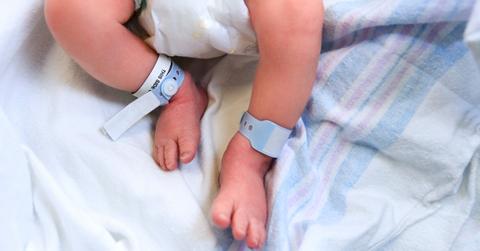Study Finds Microplastics in Human Placentas for the First Time
Microplastics were found in the placentas of unborn babies in a new study.
Updated Dec. 28 2020, 2:00 p.m. ET

We know that microplastics have permeated our natural world — they’ve been found everywhere from oceans and rivers to animal and human organs. And unfortunately, researchers have just conducted the first study that found microplastics in the placentas of unborn babies, proving that the plastic crisis has officially polluted one of the most vulnerable places on Earth.
Just how bad is it that placentas can contain microplastics? And should pregnant people be concerned about this? Keep reading to learn more about the new study.
What are microplastics?
Microplastics are pieces of plastic 5 millimeters long (or less) — that’s about the size of a sesame seed. When larger pieces of plastic (everything from fishing nets to synthetic clothing to water bottles) break down, they do not completely disappear as organic matter would. Instead, plastic breaks down into microplastics, and synthetic fabric sheds off microfibers, a type of microplastics. Microplastics can travel into the ground, water supply, fish, human bodies, and more.
A new study found microplastics in placentas.
The new study, eerily titled “Plasticenta,” was published in the upcoming January 2021 edition of the journal Environment International and conducted by a group of researchers from Italy. The study claims that this is the first evidence of microplastics being detected in human placentas.
For the study, the researchers collected six human placentas from consenting parents, and analyzed them for microplastics using a chemical analysis technique called Raman Microspectroscopy. The team found a total of 12 microplastic fragments in four of the six placentas, in all three placental portions: Five in the fetal side of the placenta, four in the maternal side, and three in the chorioamniotic membranes (both the amnion and the chorion, which compose the amniotic sac).
It’s difficult to tell exactly where the microplastics came from, but the researchers were able to identify three as polypropylene, a widely-used thermoplastic polymer. As for the other nine pieces, the researchers could only identify the pigments, which are generally used for paints, adhesives, cosmetics, plasters, and polymers.
Fortunately, all six babies in the study had healthy, normal births, The Guardian reported.
Are microplastics dangerous?
According to the study, microplastics contain substances which act as endocrine disruptors (chemicals that can interfere with our hormones and potentially lead to negative health effects). As the placenta is a vital organ for fetal development, the authors are concerned by the findings of their study.
Even though any amount of microplastics in placentas is worrisome, it is promising that only a few pieces were found in the placentas examined. That said, the authors assert that more studies need to be conducted to see how common it is to find microplastics in placentas, as well as how this could affect fetuses.
How do microplastics enter human bodies?
An alarming 2019 study from the University of Newcastle and the WWF found that humans swallow an average of 2,000 microplastics each week (about the equivalent of a credit card in size).
According to the researchers behind that study, the top source of microplastic ingestion is drinking water (both tap and bottled), followed by shellfish, beer, and salt.